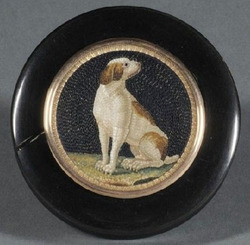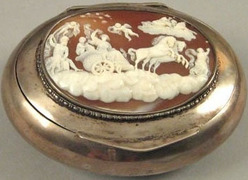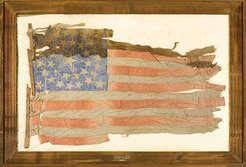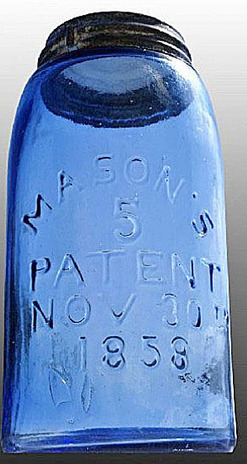
A round horn snuff box with Italian mosaic of dog in lid; image courtesy of Skinner, Inc.
Europeans found luxuries galore in the New World. Gold may have been what brought them here, but the advantages of warmer, temperate climates friendly to agriculture offered a wealth of products like sugar, cotton, and tobacco. Tobacco, long popular with Native Americans for spiritual ceremonies and pain relieving properties, traveled back to Europe, where it soon became all the rage.
Of course, then, as now, tobacco was not an inexpensive vice. (The phrase “up to snuff” is thought to have originated as a way to say someone was worldly and affluent, or in other words, able to afford snuff tobacco.) And snuff then was very different from snuff products today; American snuff is moist and placed in the mouth, but historically, European snuff was dry and sniffed like cocaine. Keeping this powdery substance dry and making it neatly portable resulted in the development of snuff boxes, and as with most accessories, the range of materials, colors, and styles quickly became staggering!

19th century German silver snuff box with cameo on lid; image courtesy of Pook & Pook, Inc.
There are, of course, the normal run of beautiful boxes made from precious metals, with delicate engravings and cameos, but there are also detailed enamel and mosaic examples, like the one pictured above. Burl also makes pretty boxes with a warm glow, but some of the more modest ones, the papier-mache examples, are my favorites, because they often have printed paper scenes of classic buildings, early American landscapes, and views of cities like New York and Baltimore. They make nifty pill boxes, and even a huge collection is easy to store. Take a look around – might find some right under your nose!
-Hollie Davis, Senior Editor, p4A.com







